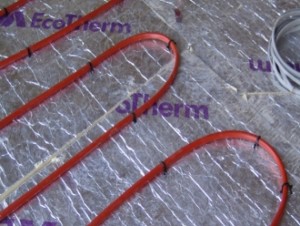10
Oct 2012
Underfloor Heating Requires A Reliable Screed
 If you fail to properly screed your underfloor heating you could be putting your floor at risk
If you fail to properly screed your underfloor heating you could be putting your floor at riskIt comes in particularly useful in those rooms that are currently tiled as we know how cold they can feel under foot during the colder months of the year which goes some way to explain its new-found popularity amongst property owners. The fact that you cannot see it is another of its key selling-points.
However, underfloor heating screed must be incorporated into the installation of any underfloor heating system so that the flooring remains solid and level throughout. The process involves placing damp proof membrane (DPM) over the prepared concrete floor base, then adding a layer of thermal insulation over it.
Sand and cement screed tends to be the most popular form of screed for underfloor heating and it ideally needs to be applied as soon as the underfloor heating has been installed. Once the screed has been thoroughly prepared either by yourself or your chosen screeding company you will have around 8-12 hours to use it and once put down in most cases light footfall can commence on the flooring within just 48 hours, heavy footfall within a week.
Getting your flooring wrong simply is not an option as getting it rectified can be a hugely expensive mistake to make and will leave you with an uneven and unusable surface that can ruin an entire room all on its own. If you have an uncertainty in your mind then you should utilise the knowledge of a specialist firm.
No matter how big the size of the floor or what shape it is, dry screed should be laid by a skilled tradesperson who can apply it carefully around the electrical pipes so that you have a floor you can rely upon. If you intend to handle the screeding process yourself for a specific home-based project then make sure you pass on your underfloor heating screeding or floating screed plans to a specialised company so that they can calculate exactly how much you will need to finish the job.
Combining quality underfloor heating and a reliable screed will result in a floor built to last.

